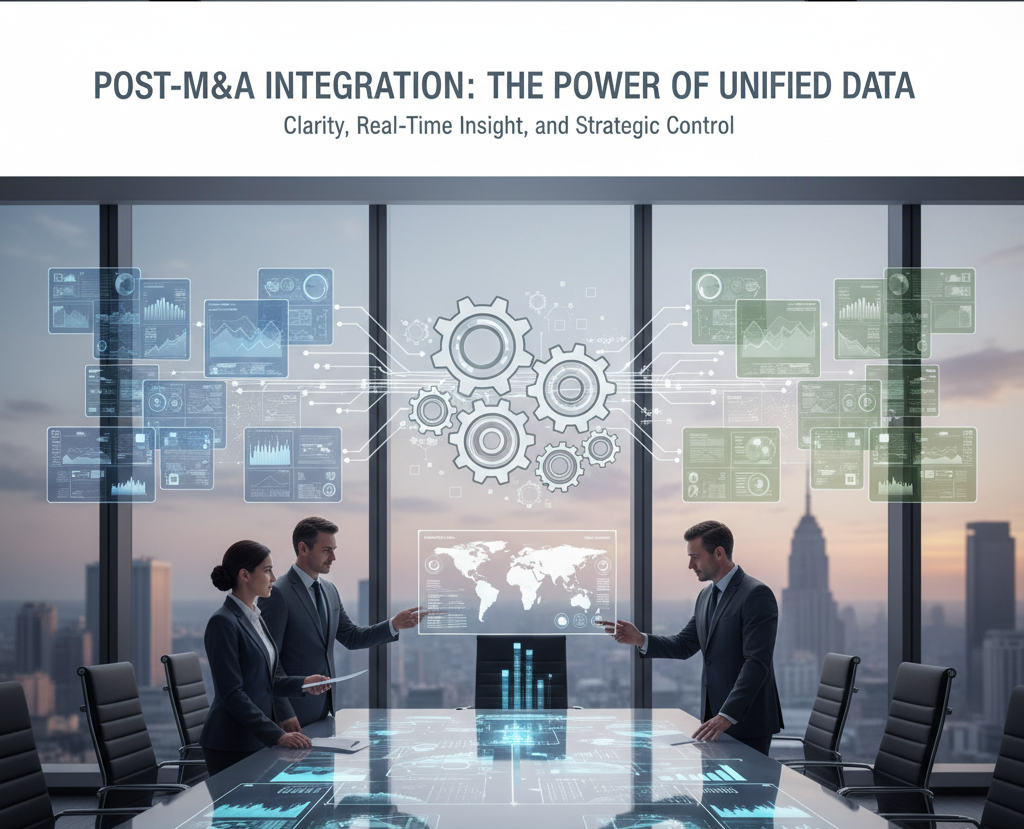Choosing an ERP system is not just an IT decision. It changes how your business operates, grows, and competes. A poor choice can lock you into years of high costs and inefficiency. The right choice supports your goals, improves operations, and adapts as markets shift.
Why ERP Selection Must Align With Strategy
ERP systems impact every core function—finance, operations, sales, HR, and customer service. If your goal is to expand into new markets, you need multi-currency, multi-language, and compliance features. If you want faster delivery, you need tight supply chain and logistics integration. When ERP features don’t match your strategy, you either change your processes to fit the system or spend heavily on customizations.
ERP Trends You Need to Factor In
ERP platforms have evolved. These changes matter when you choose a system:
- AI and Automation Built In: Current ERPs use AI for demand forecasting, fraud detection, and automating approvals. This is now standard.
- Industry-Specific Editions: Vendors such as NetSuite, SAP, and Microsoft provide preconfigured industry versions. These reduce setup time and limit custom development.
- Cloud-First with Regular Updates: Cloud ERPs release new features every few months. You stay current but must prepare for ongoing changes.
- Data-Driven Decision Making: Built-in analytics give you real-time visibility of KPIs. This makes it easier to track progress against strategic goals.
- Integration Ecosystems: APIs and prebuilt connectors make it simpler to link ERP with CRM, e-commerce, and supply chain tools.
A Step-by-Step ERP Selection Framework
A features checklist is not enough. Use a structured approach:
- Clarify Your Business Goals: Connect ERP requirements to your strategy. Goals like efficiency, faster delivery, better customer service, or market expansion will shape your needs.
- Define Requirements in Detail: Involve every department. List functional needs like inventory control or subscription billing, and technical needs like deployment model and integration.
- Establish KPIs and Success Metrics: Set metrics before shortlisting vendors. Examples include order-to-cash time, inventory turnover, on-time delivery rate, days sales outstanding, and first-contact resolution in customer service.
- Build a Shortlist: Select 3–5 vendors that fit your requirements, industry, and budget.
- Evaluate Total Cost of Ownership (TCO): Consider more than license fees. Include implementation and configuration, data migration, training, subscription or maintenance fees, and customization and integration costs.
- Arrange Scenario-Based Demos: Have vendors show how their system handles real business scenarios, not generic examples.
- Check References and Case Studies: Talk to customers who have been live for at least a year. Ask what worked, what didn’t, and what they would change.
- Assess the Implementation Partner: Look at their industry track record, project methodology, and support model.
- Plan for Change Management: Plan how you will train staff, communicate changes, and manage resistance.
- Negotiate and Finalize: Cover service levels, support timelines, and upgrade terms in the contract.
Common Mistakes to Avoid When Selecting an ERP
Many ERP projects struggle because of avoidable mistakes. Common ones include focusing only on software features and ignoring the implementation partner’s capability, underestimating change management needs, rushing through requirement gathering, and failing to plan for future scalability. Some businesses also skip hands-on demos and rely on sales presentations, which rarely show how the system will handle real scenarios. Avoiding these pitfalls reduces delays, cost overruns, and user resistance.
Don’t Skip Change Management
ERP projects often fail due to poor adoption. To avoid this:
- Get active executive sponsorship
- Explain the reason for the change
- Provide role-specific training
- Roll out in phases when possible
- Collect and respond to user feedback
Industry-Specific Considerations
ERP needs differ by sector:
- Manufacturing: Production scheduling, shop floor control, quality tracking
- Wholesale Distribution: Inventory visibility, automated replenishment, multi-location warehouse control
- Professional Services: Project accounting, resource scheduling, time tracking
- E-commerce/Retail: Omnichannel order management, POS integration, loyalty tracking
An ERP without industry fit often leads to higher costs and delays.
Partner Evaluation Checklist
Ask these questions before choosing an implementation partner:
- Do they have proven results in your industry?
- Can they provide three relevant references?
- What methodology do they follow?
- Will they assign a dedicated project manager?
- How do they support clients after go-live?
- How do they manage change requests?
Case Example: Aligning ERP to Strategy
Scenario: A wholesale distributor planned international expansion in three years.
Approach: They selected NetSuite’s SuiteSuccess for Wholesale Distribution for its global compliance and multi-currency features.
Result: Within 18 months, they launched in two new countries without major system changes. Inventory turnover rose by 14% and on-time delivery reached 97%.
Lesson: Choosing an ERP that fits strategy reduces risk and speeds up results.
Comparison Table: ERP Shortlist Example
| Feature / Vendor | NetSuite | SAP S/4HANA Cloud | Microsoft Dynamics 365 |
|---|---|---|---|
| Industry Editions | Yes | Yes | Yes |
| AI & Automation | Built-in | Built-in | Built-in |
| Cloud Deployment | True cloud | True cloud | Hybrid/cloud |
| Update Frequency | Quarterly | Bi-annual | Monthly/quarterly |
| Integration Options | APIs | APIs + connectors | APIs + connectors |
| Implementation Partners | Large network | Large network | Large network |
| Strengths | Fast deployment, strong financials | Deep manufacturing capabilities | Strong Microsoft ecosystem |
Final Thoughts
Selecting an ERP is a long-term decision. Begin with your business goals, define measurable outcomes, and judge both the software and the partner against those goals. Plan for adoption from the start. The right ERP should help you deliver your strategy today and adapt as your needs change.
Frequently Asked Questions
What is the first step in selecting the right ERP system?
Start with a clear understanding of your business goals, processes, and pain points. This helps you identify the features and modules you actually need.
How long does it take to implement an ERP system?
The timeline can range from a few months to over a year, depending on the complexity of your requirements, the size of your business, and the chosen ERP vendor.
Should I choose a cloud-based ERP or on-premise?
Cloud-based ERP offers flexibility, easier updates, and lower upfront costs. On-premise gives more control over data but comes with higher infrastructure and maintenance demands.
How do I compare ERP vendors effectively?
Look at functionality, scalability, integration options, total cost of ownership, vendor reputation, customer support, and real user reviews.
What are the most common mistakes when choosing an ERP system?
Not involving end-users in the decision, underestimating implementation costs, focusing only on price instead of fit, and neglecting change management.
How do I ensure ERP implementation success?
Have a clear project plan, involve all key stakeholders, allocate enough time for training, and set measurable goals to track progress.
Can a small business benefit from ERP software?
Yes. Modern ERP systems offer scalable options that fit small businesses, helping them streamline processes and compete with larger players.







